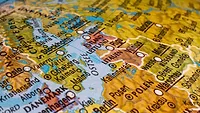Economic Burden of Foodborne Vibrio Infections Projected to Rise Due to Climate Change

Image credit: Fredrik Öhlander via Unsplash
The effects of climate change are projected to increase the economic burden of foodborne Vibrio infections in the U.S., warns the U.S. Department of Agriculture’s Economic Research Service (USDA’s ERS).
According to USDA, as sea surface temperatures rise due to climate change, the range and season of Vibrio infections are expected to expand. Instances of this phenomenon have already occurred, for example, in 2004, a Vibrio outbreak happened in Alaska, 600 miles north of any previously recorded. Additionally, Vibrio infections are now regular occurrences in Oregon and Washington, where they were once rare.
Using data on sea surface temperatures and non-cholera Vibrio infection surveillance data, USDA’s ERS, the U.S. Environmental Protection Agency (EPA), and private consulting firm Industrial Economics Inc. (IEc), have projected the degree to which climate change may increase the incidence and economic burden of Vibrio infections in the U.S. Per-case cost estimates of Vibrio infections include medical or treatment costs, productivity losses, and the value of premature deaths.
Projections show that, relative to 1995, U.S. cases of illness from non-cholera Vibrio infections may increase by 50–100 percent due to warming ocean temperatures by 2090, depending on the extent of global climate change mitigation action that is taken. This would result in the annual total cost of Vibrio infections increasing to $6.1–$8.6 billion by 2090 (in 2022 dollars), in comparison to $2.6 billion in 1995. Approximately 95 percent of total estimated costs are attributable to deaths caused by Vibrio infections.
Looking for quick answers on food safety topics?
Try Ask FSM, our new smart AI search tool.
Ask FSM →








